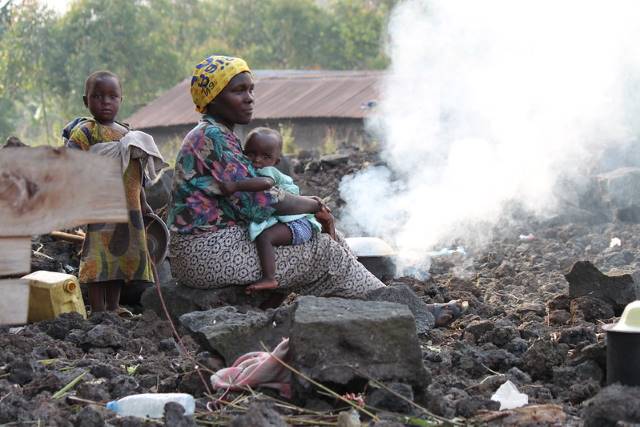The 2021 Nyiragongo Volcanic Eruption in the DRC
 On May 22, 2021, the Nyiragongo volcano in the Democratic Republic of Congo erupted. Hundreds of thousands of people experienced the aftershocks, including contaminated water and structural damage. The destruction of water infrastructure means 500,000 people now lack access to a safe water supply. In a press release, USAID announced that it would be committing $100,000 worth of humanitarian aid to secure clean and safe drinking water for citizens affected by the volcanic eruption in the DRC.
On May 22, 2021, the Nyiragongo volcano in the Democratic Republic of Congo erupted. Hundreds of thousands of people experienced the aftershocks, including contaminated water and structural damage. The destruction of water infrastructure means 500,000 people now lack access to a safe water supply. In a press release, USAID announced that it would be committing $100,000 worth of humanitarian aid to secure clean and safe drinking water for citizens affected by the volcanic eruption in the DRC.
History of Mount Nyiragongo
The Nyiragongo volcano stands almost 12,000 feet tall on the eastern border of the DRC in the strip of Virunga Mountains, a chain of active volcanoes. The volcano is one of the most active in the world and has the largest, most active lava lake. Nyiragongo has erupted several times since 1884, with the most severe eruption occurring in 1977, taking up to 400 lives. The most recent eruption before 2021 occurred in 2002, resulting in about 100 deaths and displacing up to 400,000 people.
The Aftershocks of the 2021 Eruption
The 2021 volcanic eruption in the DRC led to about 32 deaths and thousands of displacements. On May 30, 2021, in a period of just 24 hours, 92 aftershock earthquakes and tremors occurred but only about four were felt by citizens. For safety purposes, more than 400,000 people were evacuated from the North Kivu area.
Cholera, a diarrheal infection caused by drinking contaminated water, is an increased threat since the eruption. Natural disasters often increase the risk of epidemics, especially those transmitted via contaminated water. The eruption of the Nyiragongo volcano in the DRC caused the destruction of a vital water pipe and damaged a water reservoir. The damage cut off water access for about 500,000 people.
On June 7, 2021, UNICEF and partners announced that they were working to restore the water supply to the area. For temporary water access, UNICEF “installed 15 emergency station chlorination points” close to Lake Kivu. UNICEF also committed to assisting a task force by “supporting installation of 1,500 meters of pipe on top of the lava to replace pipework that has melted.”
The Hope of Crisis Assistance
Prior to the 2021 volcanic eruption in the DRC, the nation was already struggling with a humanitarian crisis, following years of political violence and conflict. At the beginning of 2021, the United Nations predicted that 19.6 million people in the DRC were in need of humanitarian assistance. With more than five million displaced persons and the highest recorded levels of food insecurity before the eruption even took place, the humanitarian crisis in the DRC has only grown. The U.N. requires financial assistance from the international community in order to comprehensively address the crisis in the DRC.
The United States serves as the largest donor to the DRC, providing more than $130 million worth of humanitarian assistance in 2021 alone. The U.S. commitment of $100,000 for water security initiatives in the DRC will aid the efforts of organizations such as UNICEF, protecting the well-being of vulnerable Congolese people.
– Monica Mellon
Photo: Flickr
